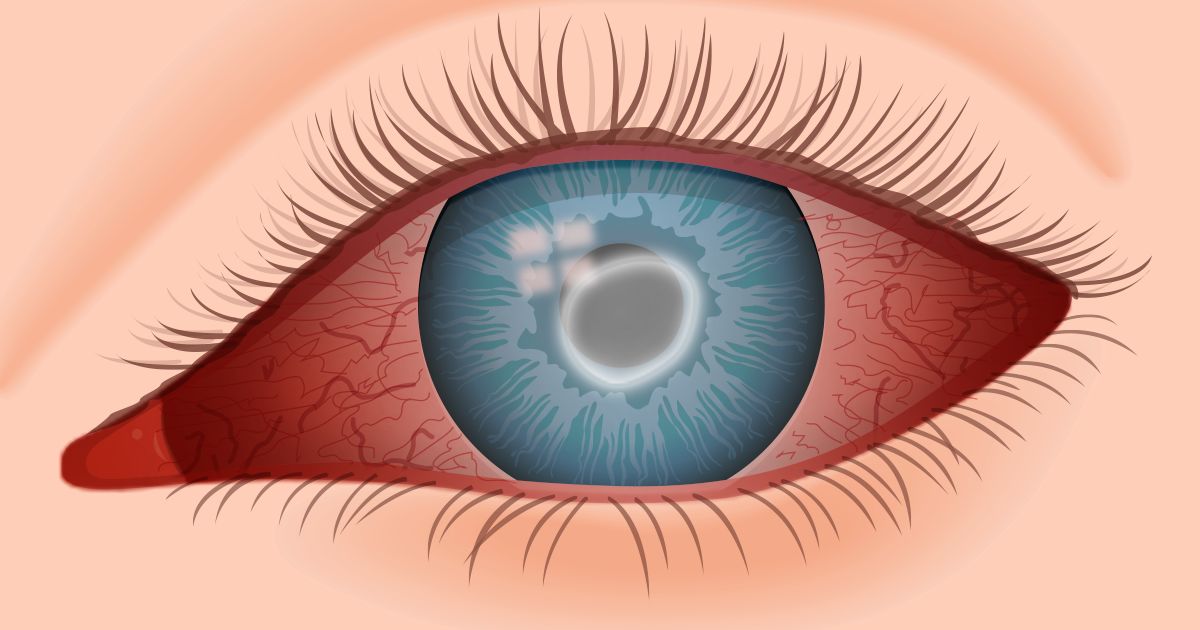Acanthamoeba keratitis: What contact lens wearers need to know

Acanthamoeba keratitis is a rare but very serious eye infection that can cause permanent vision loss or blindness.
Here is what you need to know about this potentially devastating eye disease — especially if you wear contact lenses.
What is Acanthamoeba keratitis?
Acanthamoeba are tiny single-cell animals (amoebas) that are commonly found in water (including tap water, well water, lakes, swimming pools, and hot tubs), soil, and sewage systems.
If these tiny parasites invade the cornea (the clear front surface of the eye), the resulting infection is called Acanthamoeba keratitis.
What causes Acanthamoeba keratitis?
According to the U.S. Centers for Disease Control and Prevention (CDC), an estimated 85% of Acanthamoeba keratitis cases occur among contact lens wearers.
Acanthamoeba keratitis infections often occur because of improper contact lens handling and poor hygiene. A dirty lens case also can be a source of Acanthamoeba infection.
Factors and activities that increase your risk of Acanthamoeba keratitis if you wear contacts include:
Failing to store or handle your contact lenses properly
Using contaminated tap or well water on your lenses
Creating homemade solutions to store and clean your contacts
Wearing contact lenses while swimming
Wearing contacts in a spa or hot tub
Wearing contact lenses while showering
SEE RELATED: Lens care: Cleaning, disinfection and storage
Acanthamoeba keratitis symptoms
Symptoms of Acanthamoeba keratitis include:
A feeling something is in the eye
Watery eyes
Acanthamoeba keratitis also can cause a whitish, ring-shaped corneal ulcer.
If you experience any of these symptoms, contact an eye care professional immediately. (If you wear contact lenses, remove them and store in your contact lens case - they may be needed for testing.)

Acanthamoeba is a single-cell organism that exists in nature in two forms: an active, growing form (left) and a dormant, stress resistant cyst (right). (Images: Morales, Khan and Walochnik [CC BY 2.0], via Wikimedia Commons)
Treatment of Acanthamoeba keratitis
Early diagnosis is important for treatment of Acanthamoeba keratitis to be successful.
The infection can be difficult to treat due to the resilient nature of the cyst form of the organism, which makes Acanthamoeba keratitis resistant to antibiotics used to manage other eye infections.
Medical treatment usually involves the use of topical antiseptic agents such as chlorhexidine. When successful, treatment may require use of eye drop medications for up to 6 months to a year.
Unfortunately, if not promptly treated (or if medical treatment is unsuccessful), Acanthamoeba keratitis can cause permanent vision loss or require a corneal transplant to recover lost vision.
How you can reduce the risk of getting Acanthamoeba keratitis
There are several easy ways to greatly reduce the chance of getting this sight-threatening condition — and, in fact, any type of contact lens-related eye infection:
Follow your eye care professional's recommendations regarding care of your contact lenses. Use only products that he or she recommends.
Never use tap water with your contact lenses. Contact lenses should not be exposed to water of any kind.
Do not swim, shower or use a hot tub while wearing contacts. If you do decide to wear your lenses while swimming, wear airtight swim goggles over them. (Read about additional strategies for swimming with contact lenses.)
Soak your lenses in fresh disinfecting solution every night. Don't reuse solution already in your contact lens case or use a wetting solution or saline solution that isn't intended for disinfection. (Read about which contact solution is best.)
Always wash your hands before handling your lenses, and dry your hands with a clean, lint-free towel.
Always clean your contacts immediately upon removal (unless you are wearing disposable contact lenses that are replaced daily). To clean your lenses, rub them under a stream of multipurpose solution and store them in a clean case filled with fresh multipurpose or disinfecting solution.
Prevention is your best defense against Acanthamoeba keratitis. Always use good hygiene during contact lens use and care. And if you notice any unusual eye symptoms that might indicate an infection, immediately consult an eye care professional.
To avoid Acanthamoeba keratitis and all contact lens-related eye infections, be sure to carefully follow the lens care, handling and wearing instructions you receive from your eye care professional.
Take care of your contact lens case
Cleanliness and proper care are equally important for contact lens cases.
It's important to clean, rinse and air-dry your contact lens case immediately after removing your lenses from the case. Discard the old solution and rub the inside wells of the case with clean fingers for at least five seconds. Then fill the case with multipurpose solution or sterile saline (not tap or bottled water), dump this out, and store the case upside down with the caps off.
As an extra precaution, you might want to consider sterilizing your empty contact lens case once a week by submerging it in boiling water for a few minutes.
Many eye care professionals also say you should discard and replace your contact lens case monthly or, at a minimum, every three months to help prevent contamination.
FIND AN OPTICIAN: if you're concerned about your vision, visit an optician near you.
Page published on Wednesday, 16 March 2022







